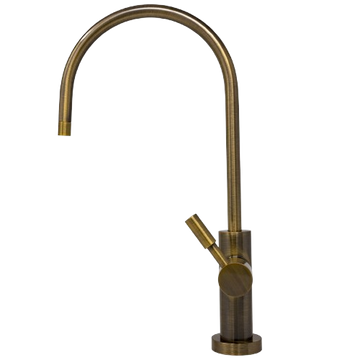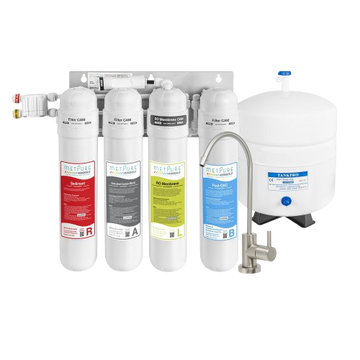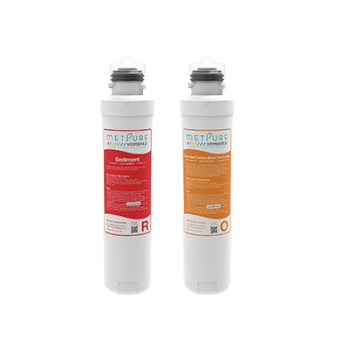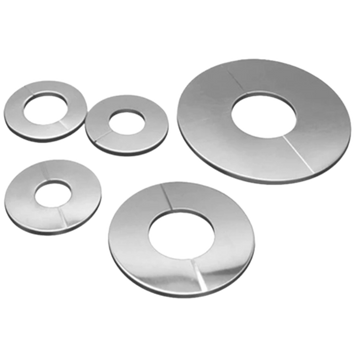The type of filter you choose depends on what contaminants are a concern. Find out which ones a particular filter reduces by checking with the manufacturer or looking up products on the NSF website.
Begin by collecting water from a clear, fast-moving stream or river or the top few inches of a lake. Test your gross filtered water by layering different filter materials, like cotton balls, charcoal and gravel in order of their sizes.
Minerals
Minerals (such as calcium, magnesium, and sulfates) are not toxic and can provide health benefits. However, in high concentrations they can cause water spots on glass and hardness and clog pipes. Most filtration systems remove these minerals. If you want to keep them in your drinking water, use a mineralizer filter. This specialized cartridge is filled with natural dolomite which adds beneficial salts back to the water. It is designed to be the last cartridge in a line of water treatment sytems like a carbon or reverse osmosis system.
Most water softeners work by ion exchange, a chemical process that replaces the calcium and magnesium in your household water with sodium. This changes the way the water tastes and affects the odor as well. The best water softeners include a built-in mineralization cartridge to replace the minerals removed by the ion exchange process.
Other systems like reverse osmosis or desalination plants are very effective at removing harmful chemicals and heavy metals from your water but not so good at maintaining healthy trace minerals. If you use one of these methods you will need a remineralizing filter or trace mineral drops to reintroduce those essential nutrients into your drinking water. These are available in liquid form as tablets or droplets that can be added to distilled or RO water.
Bacteria
In addition to minerals, bacteria in water should be filtered out as well. Bacteria can be present from agricultural runoff, sewage spills, septic system breakdown and other environmental causes. These bacteria can cause illness in humans and animals including diarrhea, vomiting and other symptoms. The most common and recognizable bacteria found in water is E.coli. It’s a type of fecal coliform, and while it can be a problem on its own, it can also indicate the presence of other types of fecal coliforms or even parasites like Giardia or Cryptosporidia.
A physical filter, whether store-bought and portable or homemade from layers of sediment, is the best method for removing bacteria. These filters typically have an absolute pore size (the tiny holes that let water through) of 1 micron or less, which is the same as most bacterial cells.
Other methods for removing bacteria from water include boiling and treating with disinfectants. To boil water, bring clear, clean water to a rolling boil for at least one minute and three minutes at altitudes above 5,000 feet. Disinfectants include unscented household chlorine bleach, iodine tablets and chloride dioxide tablets, which should be used according to the product’s instructions. These disinfectants can kill most bacteria but not viruses or some of the parasites that can cause diarrhea and vomiting, such as Giardia and Cryptosporidia.
Viruses
It may look clean, but the water in a stream, river or lake can be filled with viruses that cause things like cryptosporidiosis and giardiasis. That's why you should always filter your drinking water, especially if you're heading into a country where this is a risk.
A filter's pore size (or how big the holes in the filter are) determines what types of germs it will let through. Filters with a nominal or average pore size of 1 micron will catch protozoa and bacteria, but not viruses. If you want a filter that can also remove viruses, look for one with an absolute pore size of 1 micron or less. Look at the NSF International website to see what filters are certified to filter.
Viruses require a bit more oomph than bacteria and protozoa, which means you'll need a filter with a bit more specialized tech or extra oomph in the form of chemicals. Chemical disinfection involves adding a chemical to the water that kills viruses, bacteria, and other germs. Alternatively, you can use UV light purifiers to destroy viruses after protozoa and cysts have been removed by the filter.
Algae
A wide variety of algae exist in both fresh and salt water, ranging from microscopic single-celled organisms to seaweeds. Algae are essential to aquatic ecosystems, providing food and oxygen for fish and other organisms. However, in some locations, algae blooms can deplete water resources, create a swampy smell and produce harmful substances such as cyanotoxins.
The cause of these toxic green mucks is typically high levels of nutrients, especially nitrogen and phosphorus, in the water. These can come from a number of sources, including wastewater effluent, fertilizer runoff and soil erosion from lawns and gardens. The nutrient-rich waters provide the perfect environment for algae to thrive, and they often spread quickly.
To prevent algae from growing in a water filter system, look for a clear flowing source of water with little silt or dirt. This will allow water to flow more freely through the tank and reduce clogging. It is also a good idea to wash the filtration system and its components on a regular basis.
To remove the toxins from algae, the best method is to add chlorine to the water. Chlorine, a strong oxidising agent, reacts with the proteins and cell walls of the algae to form hypochlorous acid, which breaks down and kills the cells. This is an effective and simple way to sanitize a water filter.













